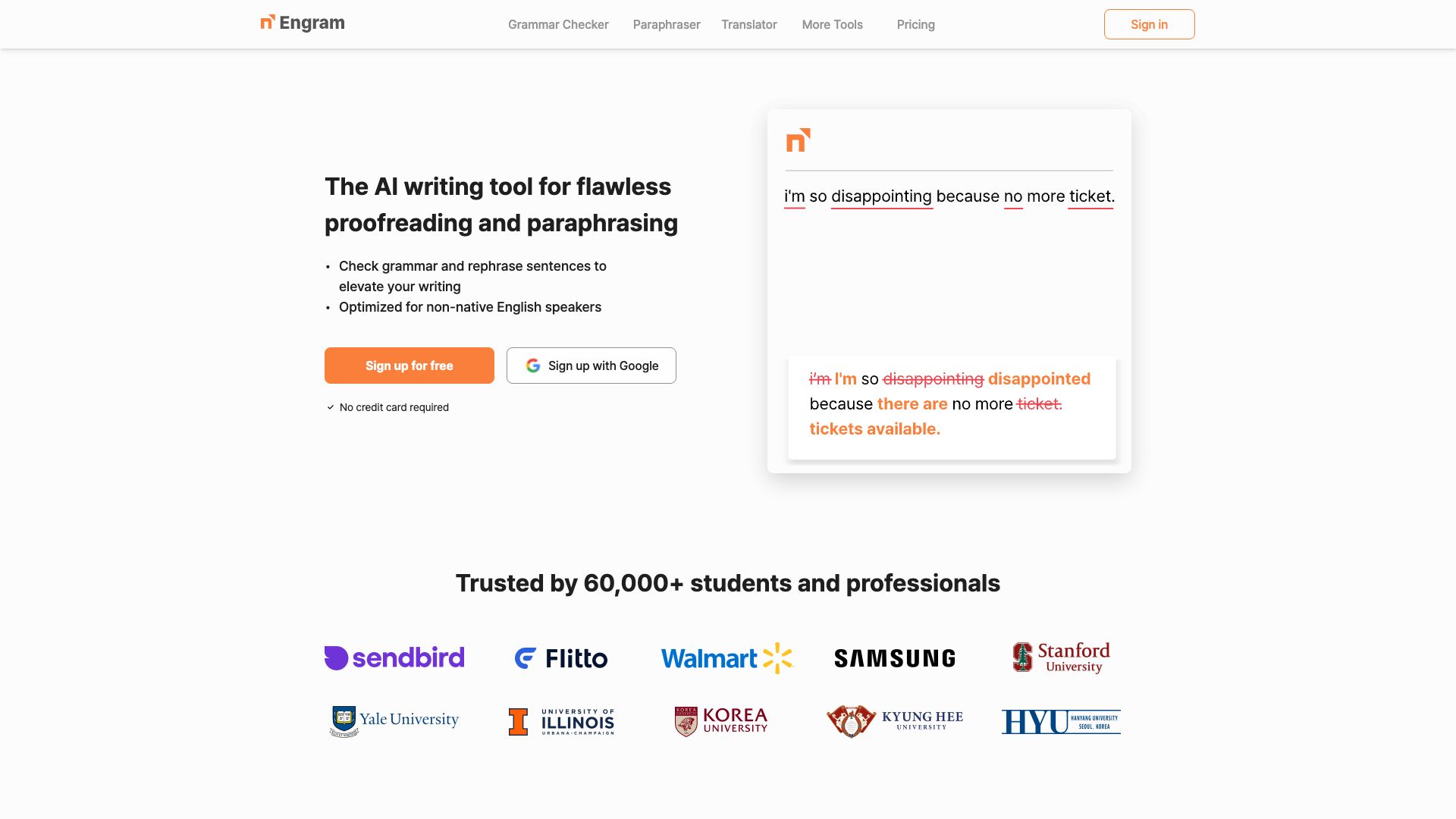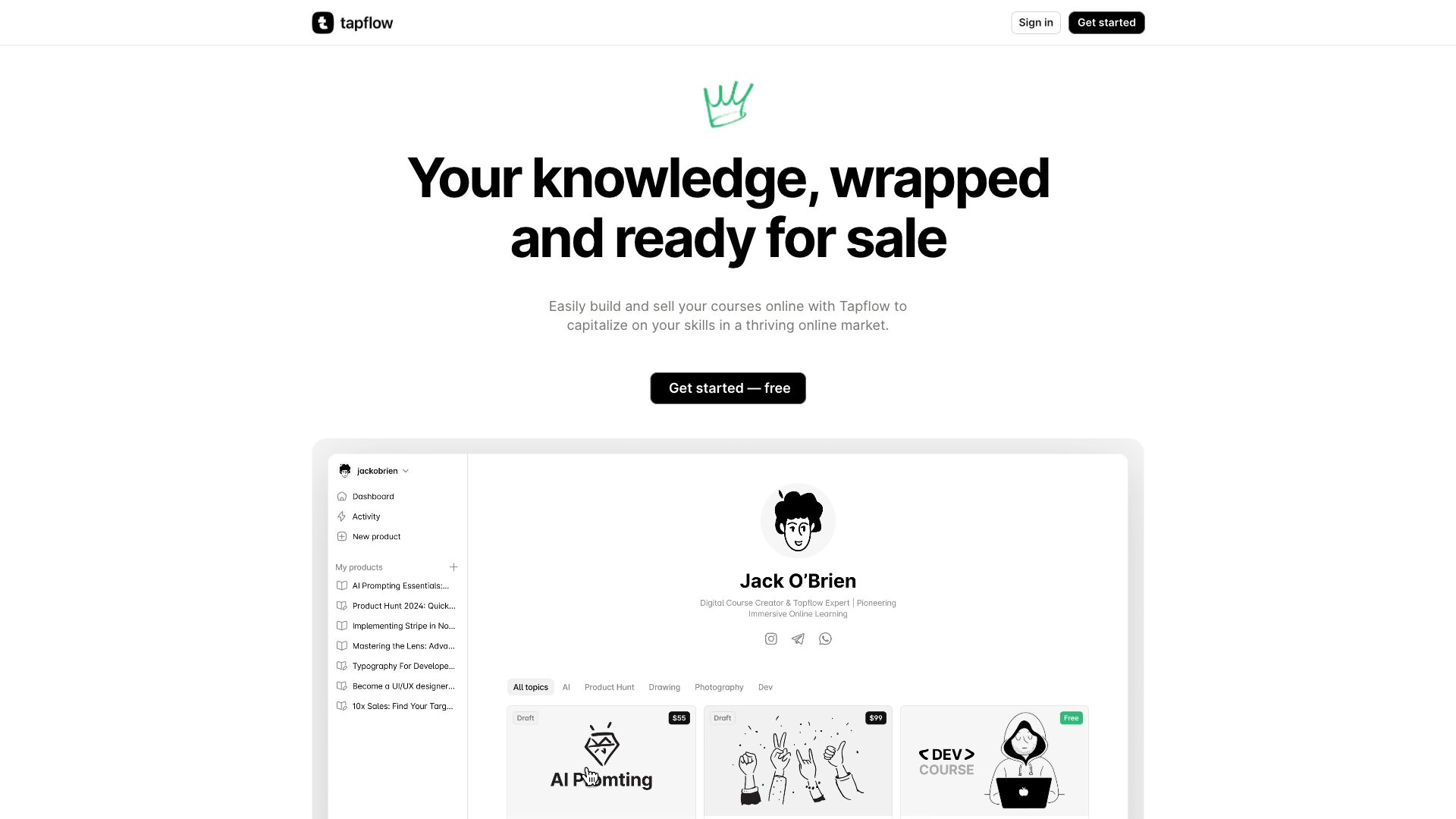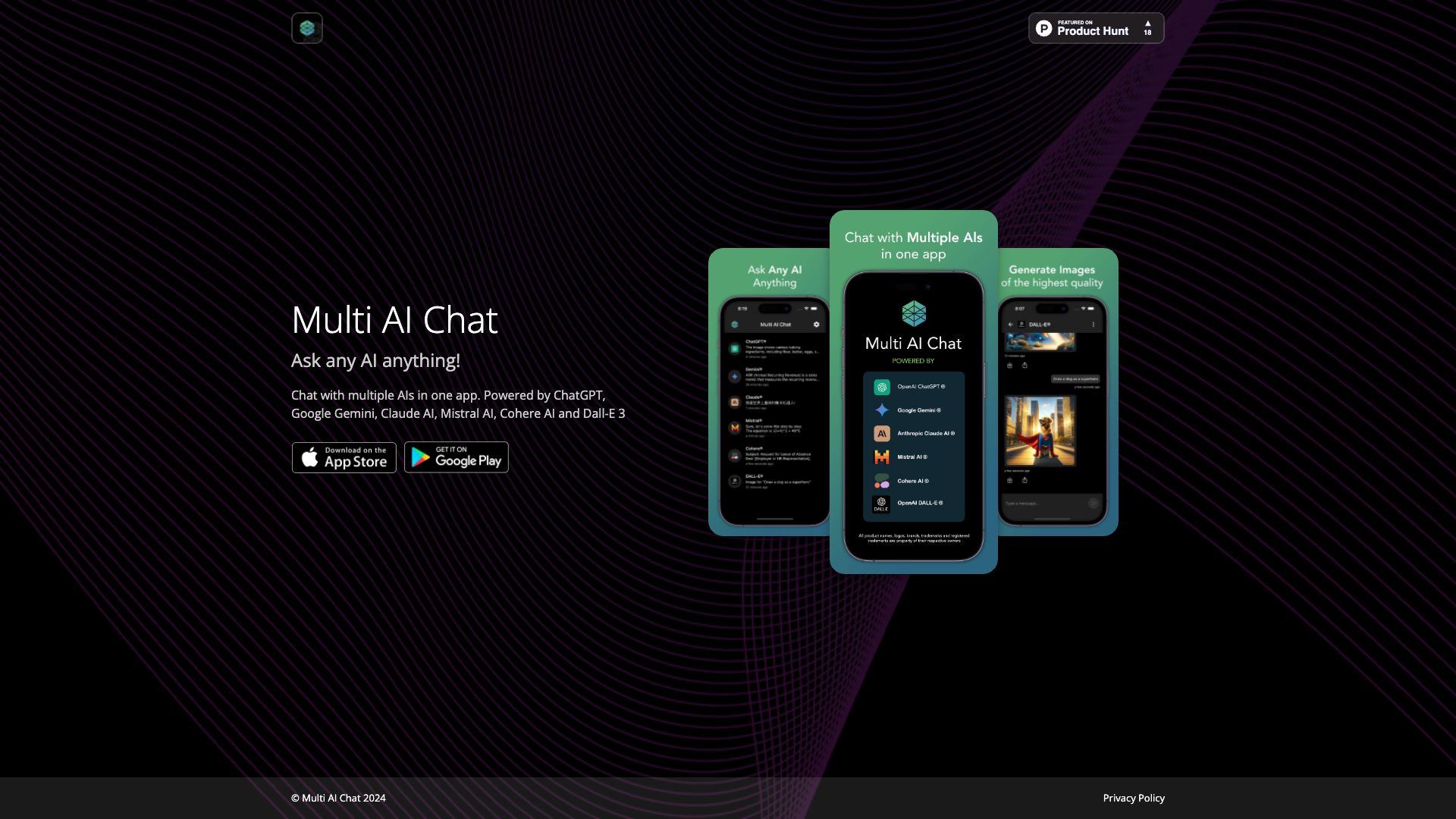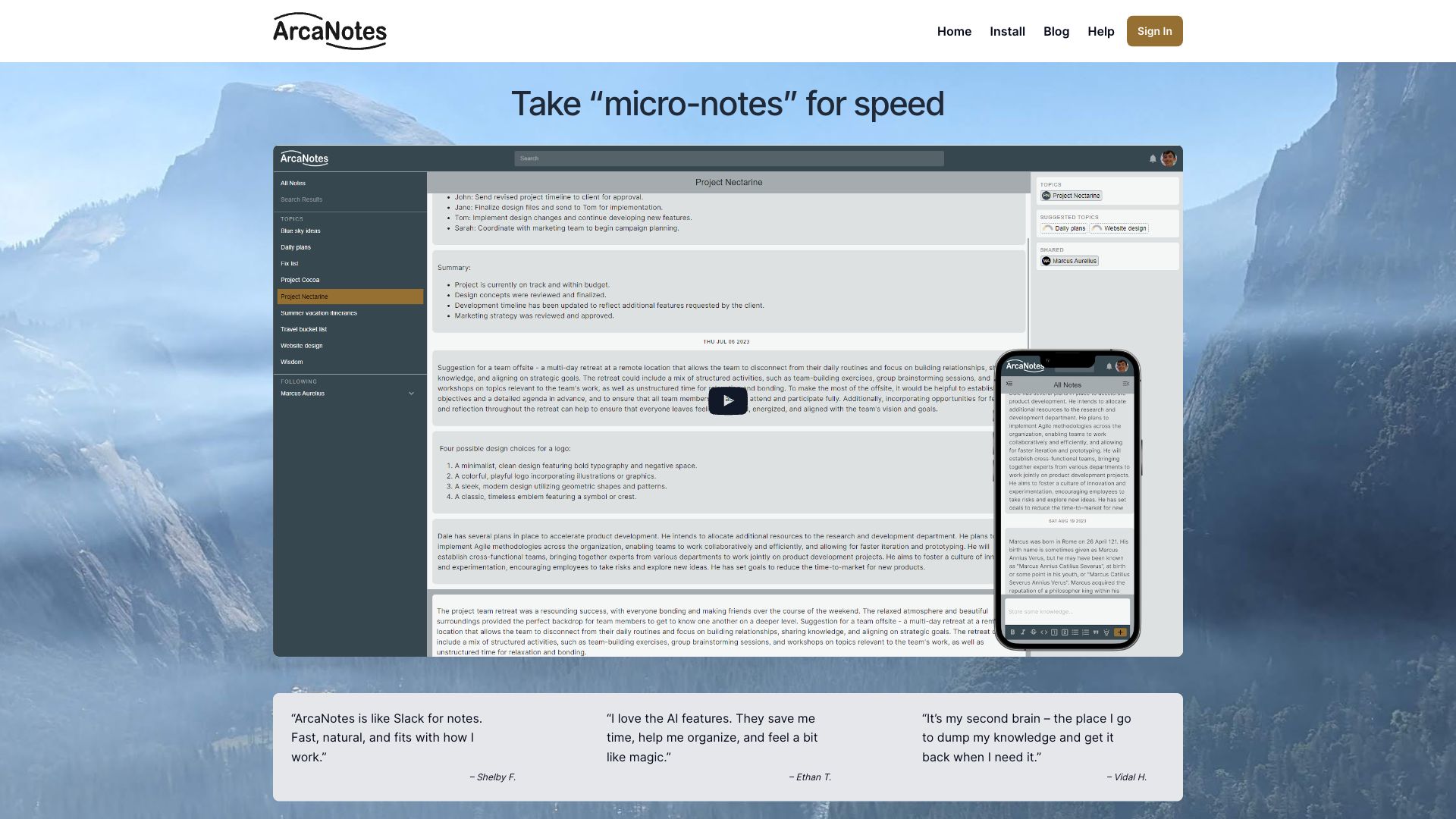Awesome AI Knowledge Management Tools in 2024
Discover the awesome 4 AI tools for 2024 By Candytools
The AI writing tool for flawless proofreading and paraphrasing. Check grammar, rephrase sentences, and translate to English all in one spot.
Tapflow is an intuitive tool designed specifically for creative professionals, making it easy to create and manage online courses.
Chat with multiple AIs in one app. Powered by ChatGPT, Google Gemini, Claude AI, Mistral AI, Cohere AI and Dall-E 3
Arcane Notes utilizes the power of AI to revolutionize your learning experience. Effortlessly create, manage, and share your notes and flashcards for efficient, engaging study sessions.
More AI Tools Categories
What is AI Knowledge Management?
AI Knowledge Management: Unlocking the Power of Information
AI knowledge management combines the capabilities of Artificial Intelligence (AI) with traditional knowledge management practices. It's all about making information within an organization more accessible, usable, and valuable.
Here's how AI is transforming knowledge management:
1. Smarter Search and Retrieval:
- Natural Language Processing (NLP): AI allows users to search for information using natural language, as opposed to keywords. This makes searching faster and more intuitive.
- Semantic Search: AI understands the meaning and context of search queries, retrieving more relevant results than traditional keyword-based searches.
2. Automated Knowledge Capture and Organization:
- Machine Learning (ML): AI can automatically identify and extract key information from various sources like documents, emails, and web pages.
- Automatic Tagging and Categorization: AI categorizes information automatically, making it easier to organize and find later.
3. Personalized Knowledge Delivery:
- Recommender Systems: AI recommends relevant information to users based on their roles, tasks, and previous interactions.
- Personalized Learning Pathways: AI creates personalized learning paths based on individual skill gaps and learning preferences.
4. Improved Knowledge Sharing and Collaboration:
- AI-powered Chatbots: Chatbots can answer employee questions, provide relevant information, and connect them with subject matter experts.
- Knowledge Graphs: AI can create interconnected networks of information, revealing relationships and insights that might not be obvious otherwise.
5. Enhanced Knowledge Creation and Innovation:
- Data Analysis and Insights: AI can analyze large datasets to identify patterns, trends, and insights that can drive innovation.
- Idea Generation and Collaboration: AI tools can facilitate brainstorming sessions and support the development of new ideas.
Benefits of AI Knowledge Management:
- Increased Efficiency: Employees spend less time searching for information and more time on high-value tasks.
- Improved Decision Making: Access to relevant and timely information leads to better decisions.
- Enhanced Collaboration: AI facilitates knowledge sharing and collaboration within the organization.
- Increased Innovation: AI tools can help unlock new insights and drive innovation.
Examples of AI Knowledge Management Tools:
- Microsoft SharePoint Syntex: Uses AI to classify and extract information from documents.
- Google Cloud AI Platform: Offers various AI services for building custom knowledge management solutions.
- IBM Watson Knowledge Studio: A platform for building and deploying AI-powered knowledge graphs.
Challenges of AI Knowledge Management:
- Data Quality: AI models rely on high-quality data for accurate results.
- Data Security and Privacy: Protecting sensitive information is crucial when using AI.
- Integration with Existing Systems: Integrating AI into existing knowledge management systems can be challenging.
- User Adoption: Encouraging employees to embrace AI-powered tools can be a challenge.
AI knowledge management is a rapidly evolving field with immense potential to transform how organizations manage and utilize their information assets.



